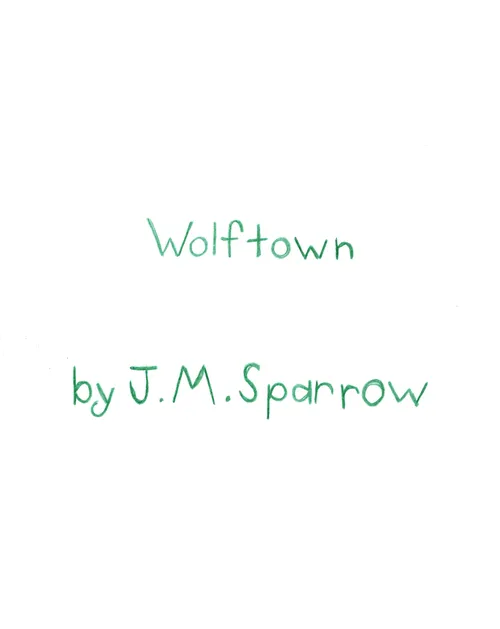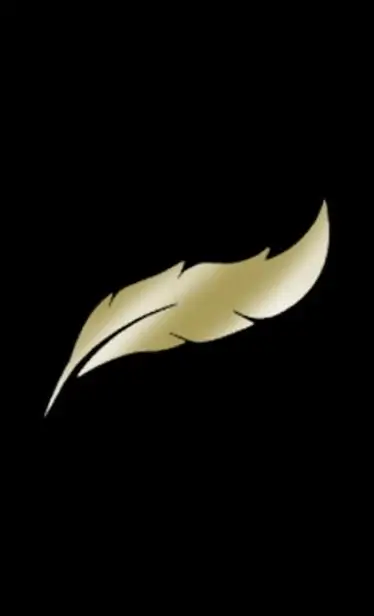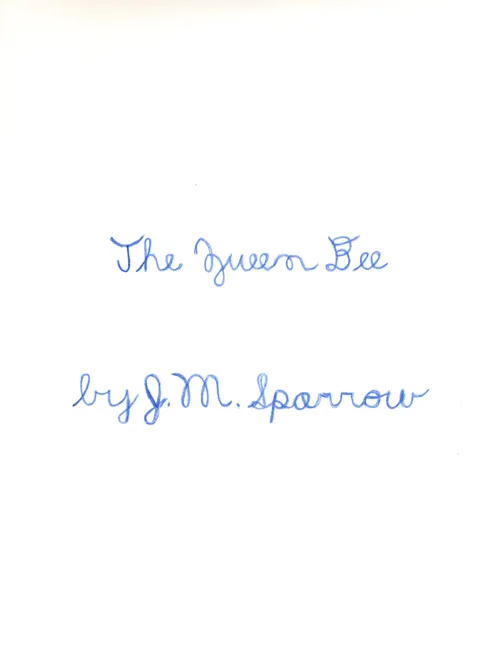To enter Holy Trinity’s gymnasium, Officer Billy Schuster balanced on one foot, put on his sock and boot, stepped across the sandbags, and repeated the process for the other foot. The whole time, he clenched an evidence bag under his chin.
Schuster trudged from table to table, distributing papers from an evidence bag. Occasionally, he handed a clipboard to a member of the wolf response, who wrote on it. To Wayne, he said, “If you recognize the individual, please sign your name, the date, and time.”
He or Lang wrote on the evidence bag: NOT FOR EVIDENCE.
Wayne glanced at the photograph for three seconds. “Dennis Laufenberg. I was right about the toupee! He is the Chief of Police, John.”
“Dennis Laufenberg is the Chief of Police, but we haven’t made a positive identification of the individual in the photo yet. I’m not going to get tunnel vision. You can try identifying the individual if you want,” Schuster said to John. “No one in the police station told Lang and me to investigate him or tell you about him.”
“Sure,” John said, and Wayne passed it to him.
The black and white security camera barely captured the bald man’s profile. Wayne recognized the long nose and jaw formed by a flabby neck which would be a double chin if his chin was non-receding.
“Now I think about it, Peter’s description matches Dennis Laufenberg and the naked man. A lot of men look like them, though.”
Schuster whipped out a pen and damp notebook. “What makes you say that?” He wrote down Wayne’s description.
Afterward, Wayne said, “Because the phones went out, Rebecca probably can’t fax the list of times he communicated with Happy Howlers.”
“Take your time. I have other, unofficial questions. Mr. Dalton, I don’t know if you want to hear them, but Lang and I don’t mind if you do.”
“Wayne was telling me about the wolf response, but I can get other work done,” John said.
“Danny says I need to sleep, eat, and shower first, and take a break away from the police station, so I’ll come back,” Schuster said.
“You won’t be able to shower,” Wayne said.
“I found that out walking barefoot down the hall.” Schuster looked like he remembered to put a colander in the sink after dumping out the spaghetti.
“Oh no,” John said, making a face, and Wayne said, “Eww!”
“The police can’t go out in the weather, and I was thinking you would have time to answer the questions,” Schuster said.
“Whenever. We’ll be stuck here until sometime tomorrow,” Wayne said.
“Mr. Dalton, a lot of part-time officers become full-time officers during the tourist season. March 10 was the first time we’ve switched every part-time officer to full-time at any time of year. It was the only way we could try stopping the wolf. Other people would tell you, but I didn’t think you would know to ask,” Schuster said.
“I’ll write it down,” John said.
Schuster left and Wayne continued telling John about the events of March 10.
Nobody reported seeing or hearing the wolves overnight; Wayne and the other response leaders thought the wolves returned to the woods. He thought the wolf response chose the completely wrong location to find the wolves.
Rebecca printed warning posters of the wolves, including their pictures, and Nancy distributed them for miles around.
Wayne thought one Happy Howlers employee should remain in town, just in case the wolves returned. He assigned Suzanne Giese to Wolftown because she preferred observing nature without leaving modern conveniences.
John needed authorization from the sheriff’s office to know much about Sergio Vasquez. Wayne limited what he told John, but he brought news reports Wayne’s wife, Nancy, collected.
Since Sergio died outside Wolftown’s city limits, the county sheriff’s office investigated his death. The sheriff’s office asked the public to identify Peter, who met Miranda and Sergio before the wolf attack. The police and search-and-rescue hurried to find the Vasquez’s campsite and Sergio’s body before the flood.
Derrick Charles led the first search-and-rescue team to look for Sergio, believed to be within staggering distance of Miranda.
At approximately 4:00 PM, a wolf charged a local mailman, Troy Vandenheuvel. The thrown doggy treat box missed, but the wolf veered off at the last minute. Troy rang the closest house’s doorbell and smacked the door, but nobody answered. He ran out of sight.
Brittney Ness and her eighteen-month-old son Evan watched the mail route daily. Next door, Brittney hustled Evan into his bedroom, where he threw a tantrum. She called the police.
Troy rang the bell of every house en route to his mail truck. The wolf leaped onto a porch and ripped the mailbag open. He galloped between the houses. Troy huddled inside his truck and waited for somebody to find him.
Police Sergeant Babcock reassured Troy that throwing a doggy treat box at a charging wolf was self-defense and a diversion, rather than feeding the wolf. Wayne thought Troy survived an exploratory attack.
Norman James tethered his wolfjäger, Max, outdoors. A wolf and Max bit each other, but Norman had no idea who began the fight. Norman expected them to gore each other to death; instead, the wolf galloped out of sight. Dr. Richardson predicted a full recovery from Max’s two bite wounds.
A six-year-old boy, Ryan Nolan, reported that a canine killed his pet rabbit. The tractor protected Benjamin Bunny well from other predators. Ryan’s parents worked all day and Ryan attended school and daycare. Due to the wolf situation, the Nolans positioned the rabbit tractor far enough into the grass for nibbling and not far enough for a tunnel, with the rest on the concrete patio. Benjamin temporarily took his morning and afternoon hops in the family room. The culprit somehow forced the tractor farther onto the grass, dug into it, and ate Benjamin—his guts, fur, and blood mixed with the grass, cedar chips, droppings, and leftovers.
Suzanne identified the wolf prints, one bloody, and collected a blood sample and two long, canine hairs. She photographed the skid marks, broken rabbit nails, and carnage. She measured the caved-in tunnel, which she and Wayne thought was the wrong shape for a canine to crawl fully through. Once inside the tractor, it would struggle to turn around or back out through the tunnel. A rabbit probably could fit through the tunnel but would refuse to enter one smelling like a predator. Suzanne and Wayne thought Benjamin would crouch as far from the opening as possible, and they wondered why he was not in the den.
“Is the den the wooden square hutch thing?” John asked.
“Right,” Wayne said. “I don’t know how the wolf would have gotten him out of the den. The best explanations are a wolf attack or a psycho killing a little kid’s pet and blaming it on a wolf. So, I’m calling it a wolf attack.”
Happy Howlers learned about the wolf attacks when the media called the office and Wayne’s house. Rebecca contacted Wayne through the walkie-talkies, and he gave her a message for the media: “Happy Howlers is cooperating with the police.”
John squinted at Wayne.
“The police hadn’t involved us, so we weren’t going to get in the way.”
The wolf hunt intended to go home at 7:00, but the attacks prompted a few members to turn around early or quit. Others, like Derrick Charles, his search-and-rescue team, and Wayne, stayed longer. Wayne hoped to catch the wolves approaching the woods, but Nancy argued with him over the walkie-talkie. She said that Derrick needed to search the area for Sergio, but Wayne would have another opportunity to catch the wolves.
The authorities figured out that Miranda wandered miles from her and Sergio’s campsite. From the moment he heard it, Derrick doubted they would find it and Sergio before the flood. He expected the flood to obliterate the site.
Suzanne agreed to work late; otherwise, Wayne would have patrolled Wolftown at night. Now Wayne wished he had followed the original plan.
The wolf attack on Suzanne lasted less than two minutes, and it was one of the few indications that the wolves hunted as a pack or counted humans as prey. To save batteries and film, Suzanne had turned off the tape recorder and camcorder, so the accounts came from Adam, Jane Matthews, a waitress, and Karl Henry, a corporal in the Wolftown Police Department.
Around 9:30 PM, Suzanne ate supper at the Old Wolftown Restaurant and waited for her husband to pick her up. She stood by the door, stiff from sitting in the van all day. Her husband drove as close to the door as possible. Carrying the tranquilizer gun, Suzanne looked around for the wolf and dashed out.
Abel pounced from the dumpsters, biting the back of her thigh, and Suzanne’s blood spurted. She collapsed and fumbled for the tranquilizer gun.
A second wolf circled the car, and Barker or Charlie howled; Wayne could not determine the howling wolf’s location. Adam accidentally bashed the second wolf by opening his car door.
Suzanne rolled onto her back. While Suzanne began going in and out of consciousness, Adam scrambled for the tranquilizer gun. Abel straddled Suzanne, his snout inside her abdomen, and pawed her.
As soon as Adam aimed at Abel, he galloped down the street. At some point, the second wolf left. The wolves howled nearby.
During the attack, Jane Matthews, called 911, and asked for Officer Matthews to respond. She hollered instructions to Adam, but he paid little attention to her. Jane avoided looking at Suzanne.
Jane threw towels to Adam, who said that Suzanne’s blood spurted.
Karl estimated he was halfway to the Old Wolftown Restaurant before Jane dialed the second 1 in 911. He sped in his own car because a police car was not available for various reasons, such as the kind of duties he performed and the Wolftown Police Department’s size. He admitted to driving faster than he would if transporting his dying children through Wolftown’s normal traffic. Daily, it hardly amounted to traffic, and the wolves scared people into staying home after dark. Nobody wrote Karl a ticket or gave him a warning about speeding.
Seconds later, Karl squealed to a stop in the parking lot, looked around quickly for the wolf, and knelt by Suzanne. He checked Suzanne’s airway, breathing, and respiration, and tightened a tourniquet around her leg. Saying, “Hold pressure on there,” Karl pressed Adam’s hand against her femoral artery.
Karl rummaged among Suzanne’s internal organs, and blood poured around his hands and her guts. Intestinal fragments slipped out. When Adam attempted to push the bulging intestines into her abdomen, Karl snapped, “Stop! You’re making it worse! Hold pressure on the towels!”
Just as Karl pinched a vessel Abel bit through, Suzanne lost consciousness for too long. He had been counting her quiet moments in his head, like the time between thunder rolls.
Suzanne’s internal bleeding slowed, but she was unconscious until on the air ambulance. The rain soaked her bandages.
Officers Matthews and Jones arrived. Officer Matthews checked on his cousin. After Officer Jones vomited, Karl told him and Adam to wait in the restaurant and send Officer Matthews to assist him. The officers forced Adam to release the pressure on Suzanne’s femoral artery, but Officer Matthews replaced him.
The dispatcher already sent Wolftown’s single ambulance somewhere else, so dispatched the fireman EMT, Chad Gates. He administered an IV and oxygen.
Gingerly, the policemen and Chad transferred Suzanne to a stretcher and carried her into the Old Wolftown Restaurant. The jostling nearly made Karl nearly lose his hold on the vessel.
Although dispatch called an air ambulance, Karl told Officer Jones to bring Dr. Groves.
Chad cut off Suzanne’s dripping clothes, covered her with a blanket, and looked for other injuries. Jane bundled everything into a trash bag for Adam.
During the next part, John steadily went queasy and made disgusted sounds.
Karl told Wayne one observation which they thought Adam should hear from a doctor and only if the doctor thought it mattered. As a Navy corpsman with two tours in Vietnam, Karl learned what perforated guts felt like. He assumed that animal bites felt distinct from gunshot wounds or blast injuries. Jane’s guts felt like the wolf bit and tore them, but, instead of eating them, left them in the abdominal cavity. The damage was too extensive for the fragments on the asphalt to be anomalies. Due to Karl’s discomfort, Wayne decided against asking for more details, to John’s relief.
Wayne said, “Abel could have been feeding. People survive animals eating their muscles, but I don’t know about internal anatomy.”
“Maybe she will recover. It’s been less than twenty-four hours,” John said.
John did not write down the internal chewing conversation.
Karl stopped pressing on Suzanne’s femoral artery, concerned about damaging her leg. Adam asked if he was still applying pressure, and Karl lied to him.
When Dr. Groves arrived, he gave Suzanne ketamine. He delicately found the blood vessel that Karl pinched. He clamped it. Karl worried about the vessel tearing, but the clamp held. Dr. Groves and Karl tended to her for five more minutes, and then, finally, the air ambulance landed.
Officer Jones called Happy Howlers and Wayne’s house, but the wolf response already contacted Wayne. Nancy asked Officer Jones to stay with the children until she reached them. The Gieses’ family lived hours away and Nancy worried about finding a neighbor or friend.
“And she worried that I’d be mauled to death, but she told me to keep looking for the wolf,” Wayne said.
“The wolves are dangerous,” John said. “I personally think they shouldn’t be killed, but they should be stopped.”
“We have a good pen for them.”
“It’s better than killing them.”
Wayne hiked and drove to the Old Wolftown Restaurant and investigated.
Not even Karl told Wayne what alerted him. Wayne thought the murder investigations pointed Karl to the Old Wolftown Restaurant. Either the police considered Karl the best officer for an important part of a murder investigation or Karl responded himself without authorization. Because Karl drove alone and without a tranquilizer gun or radio, Wayne leaned towards the latter.
When Wayne left the restaurant, the police asked Wayne to look at two murder scenes. Wayne knew about the first murder, but the public learned of the second in mid-morning on March 10. He told John the bare minimum.
There was plenty of evidence that a person with a large dog or a wolf was in the first house approximately when the murder occurred. The second house had less evidence. In both houses, the police found wolf prints and hairs. Wayne verified that a wolf left the prints and that a canine shed the hairs. Exhausted, he thought anything else he told the police would be unreliable.
The police asked if it was theoretically possible for a person to make a wolf kill people. Rather than knowing what actually happened, they wanted to know if something could happen. Because Wayne owned books describing wolf training attempts, he said that training wolves was unreliable and impractical.
As far as Wayne knew, it was the first time anybody suggested the wolf murder weapon hypothesis. Later, the wolf pack hypothesis developed from explaining why the wolves appeared alone. Wayne constantly emphasized that he needed time, rest, and data to consider the ideas thoroughly, and that the police should not base their investigation on his immediate opinion. He disliked the hypotheses. Wayne argued the ideas to test them, not to defend them—John understood that, unlike many people. Wayne wanted the authorities to ignore his dumb ideas.






This story has not been rated yet. Login to review this story.